Two industrial models for completely different industries

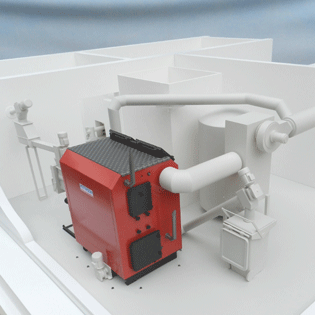
It’s been a particularly busy start to the new year and amongst the smaller projects we’ve completed recently are these two industrial models, one for a Biogas boiler (at 1:15 scale) and one for a water purification system (at 1:8 scale). Both models were for use at trade shows/exhibitions in UK and abroad and were supplied with purpose-built flight cases. The Water purification model was one of a pair and actually had removable sections to show the interior workings but for confidentiality reasons we are unable to show these views. The Biogas boiler model featured white LED uplighters to highlight it within the general plant room context. Unfortunately it was only after the model had gone that we realised we didn’t have any photos with the lights on!
Two unusual projects to brighten up February
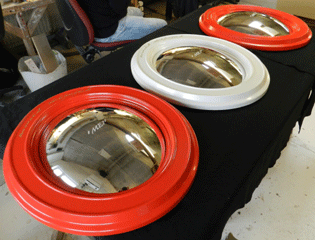
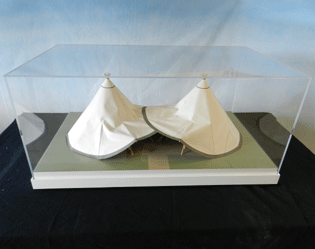
As well as our run of the mill (if you can call them that) projects, we often get asked to make unusual objects such as the oval “magic” mirrors and the twin Tipi model shown above. The mirrors were commissioned by an artist for an installation in Italy and had to feature the famous “Mirror, mirror on the wall…” wording in raised gold script. The Tipi model was produced for an events company who wanted to illustrate the exciting and inspirational space created by the twin tent set up.
Demonstration Model for Utility Oils
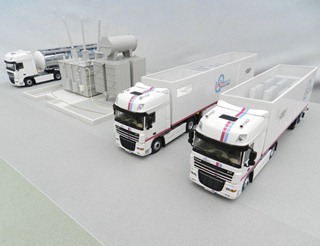

The purpose of this model was to demonstrate this company’s fleet of new, purpose-built trailers supplying mobile oil related services to industry. We were able to buy “off the shelf” DAF tractors and brand them with the company’s livery but the trailers had to be built from scratch to incorporate a simplified representation of the client’s oil processing equipment. The roofs of the trailers look as though they have been left off but they are actually made from clear 0.5mm acrylic to allow views into the interior whilst protecting the internal components. The transformer installation was also made from scratch, at a slightly simplified level.
Button controlled model for Northern PowerGrid
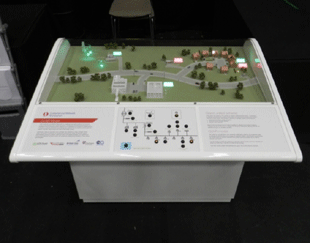
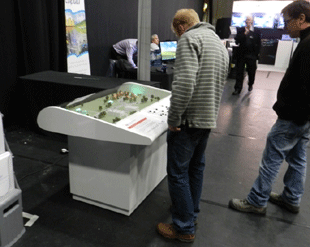
CLNR stands for Customer Led Network Revolution, a method of optimizing the power supply network based on immediate reaction to varying customer demands. The purpose of this model was to illustrate Northern Powergrid’s strategies for maximizing the efficiency of their supplies to both domestic and commercial users. The model looks deceptively simple but actually features some complex programming to demonstrate how the network adjusts to the demands of different users at different times of the day, including storing surplus power for later use. The button panel allows the user to set up varying power requirements which are indicated by lights on the model (turning red) and then press further buttons that illustrate how the demands are resolved (turning the lights green) with energy efficient systems and procedures.
“Drivetrain” for wind turbine – Scale 1:20
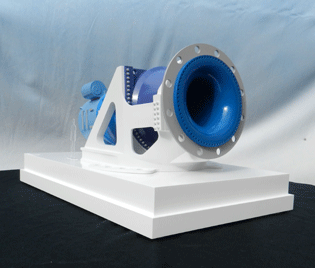
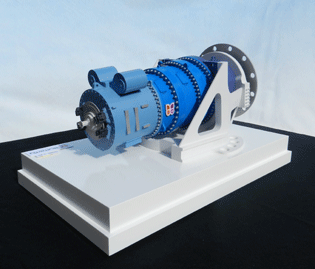
A “Drivetrain”, in case you were wondering, is the component that harnesses the power from the revolving blades of a wind turbine – it’s the machinery the blades are connected to at the top of the tower, normally hidden under a cowling. This particular model was commissioned for use as an eye catching display at trade shows and exhibitions. It was designed to illustrate the flexible, modular nature of the client’s product which could be easily adapted for different types of wind turbine. Taking the real thing along wasn’t really an option due to its massive size and weight. If you click on the images to enlarge them, you’ll see the outline of a standing figure which gives a sense of the machine’s real life dimensions. At 1:20 scale we were able to show a plenty of realistic detail, including individual nuts and bolts and the huge single disc brake with four callipers on the back face of the model.